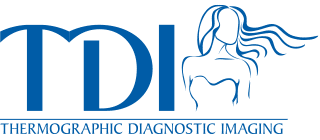Anatomic testing such as Mammography, Ultrasound, MRI, and CT Scanning do not provide skin vascular and metabolic information offered by Thermal Imaging. The clinical application of Thermography can help physicians understand physiology and potential pathology thereby improving patient outcomes.
We have found that the addition of Ultrasound to Thermography has been very useful. Because thermography can often localize an abnormality often to one quadrant of the breast, we are able to provide the ultrasound technician with a “road map” so that the study can be concentrated in a small area thereby increasing the effectiveness of this test.
With the increased usage of MRI’s, there has been a natural segue between these two tests. The MRI has provided a “large screen” view of the breasts which when coupled with thermographic imaging has been found to be extremely effective in diagnosing breast disease. Breast MRIs use a contrast dye called Gadolinium which is water-soluble and excreted in the urine within 24 hours. In healthy individuals there have been very limited side effects to this drug.
Both Ultrasounds and MRIs have the added advantage of providing information without the use of radiation.

